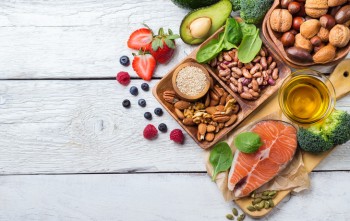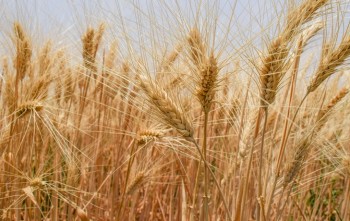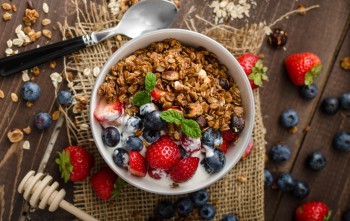Glycemic Index vs. Glycemic Load: What's the Difference?

The importance of understanding the concepts of Glycemic Index (GI) and Glycemic Load (GL) goes beyond just managing blood sugar; it also has broader impacts on health and overall body balance. Regulating GI and GL in your diet doesn't only affect the stability of blood sugar and prevent spikes that can trigger overeating, but it also plays a crucial role in controlling energy and achieving a healthy weight. Moreover, controlling GI and GL has the potential to reduce the risk of chronic diseases, including type 2 diabetes, by maintaining insulin sensitivity and keeping blood sugar levels balanced.
Thus, a profound understanding of GI and GL provides a solid foundation for pursuing a healthy lifestyle and disease prevention. Are both of them important? Let's delve into the details!
Understanding Glycemic Index and Glycemic Load
Glycemic Index (GI) and Glycemic Load (GL) are crucial concepts in nutrition science related to how food affects blood sugar responses in the body. GI measures how quickly carbohydrates in food raise blood sugar after consumption. Foods with a high GI, like processed foods or cereals, can trigger rapid spikes in blood sugar followed by a sharp drop. Conversely, foods with a low GI, such as vegetables and whole grains, stimulate slower and more stable blood sugar increases.
Glycemic Load, on the other hand, is more complex as it combines the concept of GI with the portion size of the food. GL provides information about the overall impact of a dish on blood sugar. For example, even if a food has a low GI, if consumed in a large portion, its GL can still be high.
Differences Between Glycemic Index and Glycemic Load
Glycemic Index (GI) and Glycemic Load (GL) differ in terms of concept and provided information:
- Basic Concept
- GI measures how quickly carbohydrates in food raise blood sugar after consumption, compared to pure glucose.
- GL combines the concept of GI with the portion size of the food to provide a more comprehensive picture of the total impact of a dish on blood sugar.
- Information Focus
- GI provides information about how quickly blood sugar response occurs after consuming specific carbohydrates.
- GL provides information about the total impact of a dish on blood sugar, considering both GI and portion size.
- Portion Size Importance
- GI does not consider the portion size of the food. Foods with low GI can have a lower blood sugar impact, but if eaten in large amounts, the effect can differ.
- GL considers portion size, providing a more accurate insight into how the food will actually affect blood sugar in the context of daily consumption.
- Food Selection
- GI is useful for choosing carbohydrates with a lower blood sugar impact, which can be beneficial for individuals with diabetes or those aiming to maintain stable blood sugar levels.
- GL helps select foods and meals that comprehensively control blood sugar response, avoiding significant spikes.
- Health Implications
- Using GI and choosing low-GI foods can help manage weight and control blood sugar for individuals with diabetes.
- Using GL helps control blood sugar response more effectively by combining GI control and portion size, potentially being more relevant in the context of daily diets for everyone.
Classification of Glycemic Index and Glycemic Load
- Glycemic Index (GI) Classification
- High (70 or above): Foods with a high GI cause rapid spikes in blood sugar. Examples: White bread, processed cereals, candies.
- Medium (56-69): Foods with a medium GI moderately increase blood sugar with a moderate speed. Examples: White rice, whole wheat bread.
- Low (55 or below): Foods with a low GI cause slower and more stable blood sugar increases. Examples: Vegetables, fresh fruits, whole grains.
- Glycemic Load (GL) Classification
- Low (10 or below): Foods with a low GL have minimal impact on blood sugar. Examples: Green vegetables, whole grains.
- Medium (11-19): Foods with a medium GL have a more significant impact but are still controlled. Examples: Fruits, whole wheat bread.
- High (20 or above): Foods with a high GL can cause significant spikes in blood sugar. Examples: Processed foods, sweet snacks.
Example Glycemic Index Values for Foods
- Foods with High GI (70 or above):
- Baked potato: around 85
- White rice: around 73
- Doughnut: around 76
- Foods with Medium GI (56-69):
- Brown rice: around 68
- Whole wheat bread: around 67
- Pancake: around 59
- Foods with Low GI (55 or below):
- Broccoli: around 10
- Apple: around 36
- Black beans: around 30
Conclusion
It's important to understand both GI and GL concepts, how they interact with each other, to make informed food choices that support blood sugar health and weight management. The Glycemic Index (GI) and Glycemic Load (GL) classifications help identify the impact of food on blood sugar.
The classifications of GI and GL provide general guidelines and can vary depending on individuals, food combinations, and factors like food processing and fiber content. Knowing these classifications can assist in choosing healthier foods and supporting blood sugar management and overall health.
The GI value can vary based on factors like cooking method, ripeness, and food combinations. In general, foods with a low GI are better at maintaining stable blood sugar levels, while foods with a high GI can trigger rapid spikes in blood sugar. Food combinations containing fiber, protein, and healthy fats can also influence the impact of food on blood sugar.
YAVA as a Provider of Low Glycemic Index Foods/Snacks
YAVA is a supplier of food and snacks that focuses on offering products with a low Glycemic Index. YAVA provides a variety of healthy snacks including granola, cashews, popcorn, and crispy puffs made from natural ingredients sourced from various regions in the eastern part of Indonesia.
These products are designed to maintain blood sugar stability and provide delicious and healthy alternatives. Using natural ingredients, without sugar alcohols or artificial sweeteners, and free from preservatives and MSG, YAVA presents a range of flavors that are both nutritious and beneficial for your eating habits. Keep an eye on nutritional information and consider advice from healthcare professionals before making significant changes to your diet.
Having trouble finding low-sugar foods? Discover YAVA's low-sugar food products on your favorite online store.


















